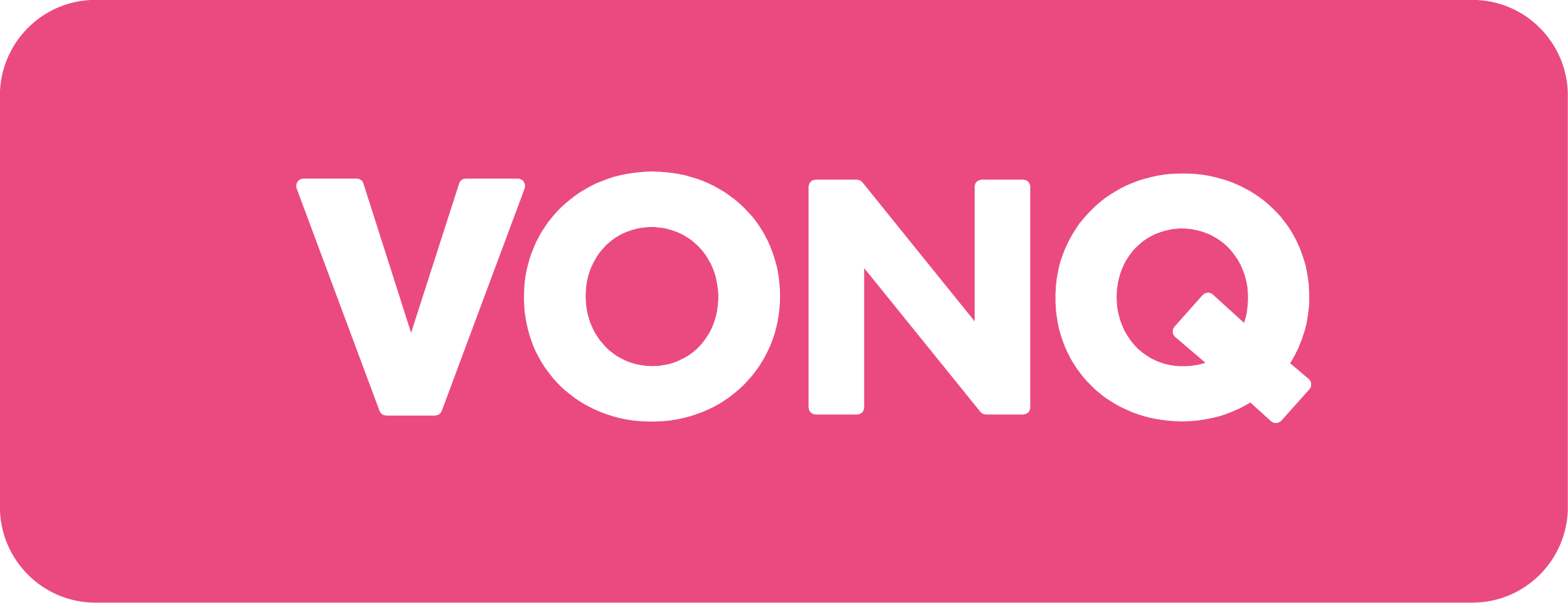What is recruitment and why is it important?
Recruitment, also known as staffing, is part of any company’s human resources management. It’s main task is to manage the workforce in such a way that internal performance processes remain at or reach the desired level. However, performance can decline when employees leave the company or when staffing levels do not keep pace with the company’s growth. Thus, recruitment needs to be planned carefully.
How does recruitment work? – Recruitment tasks
Finding and recruiting people of the right quality and quantity, at the right time and for the right job is not easy. To reduce the complexity of the process, recruitment is divided into several tasks, each of which requires specific instructions.
The recruitment tasks are as follows:
- Recruitment planning
Determine the qualitative requirements
Determine the quantitative requirements - Sourcing
Select media channels
Create & publish job advertisements
Conduct recruitment marketing - Candidate Management
Process applications
Conduct interviews
Evaluate applicants - Onboarding
Draft contracts
Train employees
Recruitment Planning
Recruitment planning is the process of determining a company’s future staffing needs. The aim is to ensure that the organisation has the right people with the right skills (quality) and in the right numbers (quantity) at all times.
Qualitative Recruitment Planning
Qualitative recruitment planning is the process of determining the requirements for human resources. It is important to consider the goals and strategies of the companies and to create a catalogue of requirements based on these.
Goals and Strategy
Recruitment planning is driven by the organisation’s goals and strategies. This is the basis for determining the skills and requirements needed to achieve the goals and implement the strategy. The planning horizon can also be used. The shorter the planning horizon, the easier it is to predict workforce requirements accurately. The broader the company’s goals and strategies, the longer the planning horizon will usually be. Errors in planning are therefore more likely and must be taken into account.
Requirements catalogue
The best way to find out what skills are needed is to talk directly to the people in a department. Together, a catalogue of requirements can be drawn up, breaking down the need for skills at a professional level.
Quantitative workforce planning
Once the requirements have been defined, the number of staff required can be calculated. A number of formulae are available for this purpose.
Collection of formulas for quantitative workforce planning:
- Labour demand = (x tasks * y time) / regular working time + Reserve demand
- Reserve demand = Labour demand x Distribution time factor
- Distribution time factor = absences / actual working days
- Gross staffing demand = Labour demand + Reserve demand
- Updated headcount =
(Fixed arrivals + Current headcount) – projected departures - Net staffing requirement = Gross staffing demand – Updated headcount
In addition to the various formulas, there are six types of staffing demands that need to be distinguished in order to calculate requirements correctly.
Types of staffing requirements
- Labour demand: The number of staff required by the operation to cope with the workload.
- Reserve demand: Staff required to cover absences from work, e.g. due to illness or leave.
- Additional demand: Staff needed during particularly labour-intensive peak periods.
- New demand: Staff required as a result of organisational expansion and capacity increases in the business.
- Replacement demand: Needed when employees leave, either planned or unexpectedly, and a position becomes vacant.
- Reduced demand: Staff who are no longer required, e.g. due to a slump in orders.
Calculating quantitative staffing requirements
Labour demand
The first step is to determine the laboour demand, i.e. the number of people needed to achieve the defined objectives. Historical data is used to calculate how many people are needed to complete x tasks in y time. This is compared to the regular working time, which is 40 hours per week and 52 weeks per year for a regular full-time job.
Labour demand = (x tasks * y time) / regular working time + reserve demand
Let us assume that a company with 5 active employees has to handle 1000 planned tasks (e.g. customer meetings) in the new year. From past data it is assumed that each task takes 1 day and the company plans a 40 hour week. Then the formula for the labour demand is as follows
Labour demand= (1000 Tasks * 1 Day * 8 Hours / 40 Hours * 52 Weeks)
= 3,84
For 1000 customer appointments, the company therefore needs 3.84 employees.
Note! Absences and weekends are not included. The distribution time factor is used for these.
Distribution time factor
The distribution time factor takes into account times when no work can be done (e.g. due to illness).
Let us assume that each employee has the following absences from work
– 14 sick days
– 24 holidays
– 8 public holidays
– 3 days for company events
– 3 days of management meetings
This gives a total of 52 days of absence.
As with absenteeism, the number of actual working days must be taken into account when calculating the distribution time factor. For this purpose, all weekends in the year are taken into account. Assuming a five-day working week and a total of 52 weeks per year, this results in 104 days of additional absence.
Actual working days = 365 – 52 – 104 = 209 days.
The distribution time factor can now be calculated as follows:
Distribution time factor = absenteeism / real working days
= 52 / 209 = 24,9 %
The reserve demand can now be calculated.
Reserve demand
The reserve requirement is therefore the number of staff required to replace absent staff during their absence. The formula is
Reserve demand = Labour demand x distribution time factor.
In our example, this means that the 3.84 employees from the Labour demand are offset against the distribution time factor of 24.9%. We therefore need a reserve demand of 0.95 employees.
Gross staffing demand
If we add the reserve demand to the labour demand, we get the gross staffing demand.
Gross staffing demand = Labour demand + Reserve demand
= 3,84 + 0,95 = 4,79
The gross staffing demand indicates how many employees are needed to complete the tasks, taking absences into account. However, there are already employees in the company. To take these into account, the updated headcount is used.
Updated headcount
The updated headcount is the current headcount and takes into account unplanned arrivals and departures in the company. For example, employees may resign at short notice or return from parental leave. Such factors also need to be taken into account when planning headcount.
In our example, the company has 5 active employees. Two of them resign just before the planning phase and one starts his new job in the company.
The calculation formula is as follows:
Updated headcount =
(Fixed entries + current headcount) – Expected departures
Current headcount = 5
Additions = 1
Departures = 2
Updated headcount = (1 + 5) – 2 = 4
Net staffing demands
The net number of employees required is calculated as follows:
Net staffing demands = Gross staffing demands – updated headcount
= 5 – 4 = 1
Result: The company needs to hire one more employee to meet the planned 1000 customer appointments.
Recruitment methods
Now that the quantitative and qualitative workforce planning has been defined, the next step is to consider the methods of sourcing new staff, i.e. recruitment.
Recruitment methods fall into two categories:
- Internal recruitment
- External recruitment
The difference lies in whether existing employees within the company (internal) or new employees from the open labour market or from other companies (external) are recruited to fill vacancies.
Internal recruitment
Internal recruitment aims to position and/or develop existing employees for new positions. Measures such as internal job advertisements, promotions, training, apprenticeships and internships are used for this purpose.
Internal Advertising
Internal vacancies can be advertised via the intranet, the classic notice board or e-mail circulars, but also by talking to qualified employees.
Promotion
This is when an employee is promoted or transferred to a new position within the company, provided he or she has the skills. This has advantages for both the employer and the employee. The position is filled more quickly, know-how is retained within the company and the employee is usually rewarded with more responsibility and a higher salary.
Training
Training employees is also part of recruitment. In addition to improving skills, training can also prepare employees for new jobs. For example, an engineer may be given management training to prepare him or her for a job with management responsibilities.
Training, internships and apprenticeships
Companies offer apprenticeships, internships and traineeships to train young talent internally. Upon completion, they can be seamlessly retained as qualified employees, saving time and money on recruitment.
Pros and cons of internal recruitment
Pros
- Lower recruitment costs
- Less time spent on recruitment and onboarding
- Improves in-house skills
- Retention of in-house expertise
- Employees are already familiar with company procedures
Cons
- Reduced pool of potential candidates
- If promoted, old position must be filled
- Rejection of internal candidates can reduce morale
- Lack of diversity of people and processes
- Increased competition for staff
External recruitment
External recruitment refers to the recruitment of new employees from other companies or the labour market. Common methods include posting jobs on job boards and your own career website, online advertising, running talent pools and employee referral programmes, events, and passive and retained recruiting.
With the plethora of job boards and media channels available, manual selection of the best media channels is no longer possible. However, there are a number of software solutions that use data to select the channels that deliver the most candidates for a particular company. Read more in this blog post.
Job boards
Job boards are always an option for external recruitment as they allow for a broad or very specific selection of candidates, depending on the board. Job boards such as indeed.com or stepstone.de offer jobs to a wide range of jobseekers. On the other hand, niche job boards such as ictjob.de and sekretaria.de allow you to reach very specific target groups. Job boards are also good for employer branding as well-designed adverts can be seen by a large number of users.
Career website
Posting job adverts on a company’s career website often results in quick placements as candidates are specifically interested in a company.
Social Media and Online Advertising
Platforms such as Facebook, LinkedIn, Xing and Instagram are used to distribute job adverts and are also good for employer branding.
Talent pools
Talent pools also allow for quick filling of vacancies as there is already a channel of communication with a previous candidate / prospect and they can be informed directly about a new position.
Employee referrals
Recommendations from existing employees are also very important as they already know the company and a personal recommendation from a friend or acquaintance has a higher degree of credibility.
Events and conventions
Events combine several benefits. They combine the positive atmosphere of an event with a pre-selected group of visitors. Visitors are open to new things and want to be informed. It is the ideal opportunity for companies to present themselves to interested parties and build a deeper relationship through face-to-face meetings.
Passive recruiting
Passive recruiting can also be considered an external sourcing activity. Passive recruiting is when people who are not actively looking for a job are attracted to a company through advertising and recruitment activities and then apply.
Retained recruiting
This is when an external service provider, such as a recruitment agency or consultant, is hired to help the company recruit.
Pros and cons of external recruitment
Pros
- Wider pool of potential candidates
- Diversification of the workforce and the resulting diverse influences on problem solving, decision making, task handling, team, etc.
- Higher commitment from new recruits
- No training costs
Cons
- Higher recruitment costs
- More time spent on recruitment
- Higher risk of mismatch (technical/interpersonal)
- Longer induction period
The required staffing needs have been identified, the requirements catalogue has been created and the preferred recruitment methods have been determined. The next step is to advertise the role.
Job Advertisement
A good job advert should be clear, concise and engaging to attract potential candidates and provide them with all the information they need. A good model for targeting candidates effectively is to create a candidate persona.
The following points should be included
Job Advertisement “must-have”
Job title: Use a clear and concise title for the job that reflects the responsibilities and role of the position.
Company introduction: Provide a brief introduction to the company, its mission, values and culture. This will help candidates to better understand the company and assess their suitability for the role.
Duties and responsibilities: Describe the main duties and responsibilities of the position in detail to give candidates a clear picture of what is expected of them.
Requirements: List the required qualifications, skills and experience that applicants should have for the job. Divide them into ‘must haves’ and ‘nice to haves’ to highlight the essential criteria.
Salary and benefits: If possible, include information about the salary range or compensation structure. Also mention additional benefits such as bonus schemes, health benefits, training opportunities, etc.
Contact information: Provide clear contact details for candidates to get in touch with if they have any questions or would like more information.
Location and working hours: Clarify the location of the job and the expected working hours (full-time, part-time, shift work) as well as the possibility of flexible working arrangements.
Job Advertisement “Nice to have”
Career development: Show potential development and promotion opportunities within the company to give candidates long-term prospects.
Application process: Describe the application process, including contact details or application portal. Also state the expected date by which applications can be submitted.
Company image: Include images or videos to convey the working environment, teams and atmosphere of the company. This can help candidates visualise what it is like to work for the company.
Diversity and inclusion: Highlight the company’s commitment to diversity and inclusion to appeal to potential candidates from diverse backgrounds.
Remember that a good job advertisement is not only about attracting candidates, but also about attracting those who are a good fit for the role and the company culture. In addition, every job advertisement is an opportunity to enhance your company’s employer branding. It is particularly useful to include the ‘nice-to-haves’.
Once the ad is written, it needs to be uploaded to the selected media channels. Then it’s time to wait…
Candidate management
Evaluation of applications
The active selection process now begins. This phase of the recruitment process is crucial and undoubtedly one of the most challenging. The applications received are sifted through by Human Resources staff.
This is followed by careful analysis with the aim of shortlisting suitable candidates. This shortlist may include a small number of candidates or a large number of potential applicants.
Screening and selection
Once suitable candidates have been identified, the next step is to invite them for interviews. These interviews allow the HR and technical departments to get a first impression of the candidates. Depending on the position and the number of applicants, further selection procedures may be necessary. These may include invitations to (online) assessment centres or trial work days.
Introduction of new employees (Onboarding)
The aim of onboarding is to integrate a qualified candidate into the company and transform him or her from an applicant to an active employee. In this context, it is the task of the HR department to draw up an employment contract and, if necessary, to adapt it individually. This is followed by coordination with the new employee regarding the start of work, the required work equipment and the internal company guidelines that must be observed. This is the final stage of the recruitment process.
Conclusion Recruitment
Although recruitment is undoubtedly demanding and time-consuming, its importance in a business context cannot be underestimated. Those who understand their organisation’s needs, use the right recruitment channels and invest in their external representation will be able to achieve their staffing goals in an efficient manner. In doing so, they will be taking on arguably one of the most important tasks within the organisation – attracting the best people.
FAQs about recruitment and its processes
1. What is recruitment?
Recruitment, also known as staff acquisition, is an important part of a company’s human resources management. Its main task is to manage the workforce in such a way that the internal performance processes meet the intended objectives.
2. Why is recruitment important?
Recruitment is important to ensure that an organisation has the right number of qualified people with the right skills at all times. This is critical to maintaining operations, supporting growth and achieving business objectives.
3. What are the steps involved in recruitment?
Recruitment involves a number of steps:
- Recruitment planning: Identifying quantitative and qualitative staffing requirements.
- Recruitment: Selection of recruitment channels and publication of job advertisements.
- Candidate management: processing applications, conducting interviews, assessing candidates.
- Onboarding: introducing new employees to the organisation.
4. What is Recruitment Planning?
Recruitment planning is the process of determining a company’s future staffing needs. Qualitative and quantitative requirements are taken into account to ensure that the organisation has the people it needs at the right time and in the right place.
5. What are the tasks of qualitative recruitment planning?
Qualitative recruitment planning is the process of identifying recruitment needs based on the organisation’s goals and strategies. This involves identifying the competencies and skills needed.
6. What are the tasks of quantitative recruitment planning?
Quantitative recruitment planning involves calculating the number of employees required. Various formulas are used to determine staffing requirements, reserve requirements, gross staffing requirements and net staffing requirements.
7. What types of staffing demands are there?
There are six types of requirements:
- Labour demand
- Reserve demand
- Additional demand
- New demand
- Replacement demand
- Reduced demand
8. What is internal recruitment?
Internal recruitment refers to the positioning or development of existing employees for new positions within the organisation. This can be done through internal job postings, promotions, training and education.
9. What is external recruitment?
External recruitment involves recruiting new employees from outside the company, either from the labour market or from other companies. This can be done through job advertisements, online advertising, employee referrals, events and other methods.
10. What is the importance of a good job advertisement?
A good job advertisement is clear, concise and attractive. It informs potential candidates about the job, the company, the requirements, the salary, the benefits and the application process. A well-designed job advertisement helps attract the right candidates and strengthens employer branding.
11. What is the recruitment process?
The recruitment process involves screening and evaluating applications, conducting interviews and other selection processes to identify suitable candidates. This process is critical to selecting the best people.
12. What is onboarding?
Onboarding is the process of introducing new employees to the organisation. It includes setting up the employment contract, agreeing start dates, work tools and company policies, and integrating the new employee into the team and company culture.
13. Why is it important to attract quality people?
Attracting top quality people is critical to the success of an organisation. Skilled and committed employees help achieve business goals, drive innovation and strengthen competitiveness.
14. What are the benefits of recruiting internally?
The benefits of internal recruitment include lower recruitment costs, faster induction, use of existing skills and retention of internal expertise. However, the choice of potential candidates may be limited.
15. What are the benefits of external recruitment?
External recruitment offers a wider range of potential candidates, a more diverse workforce and greater commitment from new employees. However, there may be higher costs and longer recruitment times.
16. How can a good job advertisement strengthen employer branding?
A well-designed job advertisement can strengthen employer branding by providing information about the company, culture and development opportunities. This not only attracts applicants but also helps suitable candidates to identify with the company.
17. What is the next step after the job posting?
After the job is advertised, the next step is the candidate management process, which includes the screening and evaluation of applications, as well as interviews and selection procedures.
18. What is the goal of the onboarding process?
The goal of the onboarding process is to successfully integrate new employees into the company and turn them from applicants into active employees. This includes drawing up the employment contract, agreeing the details and integrating them into the company culture.
19. How does recruitment contribute to business success?
Recruitment contributes to business success by ensuring that the company has the right people with the skills it needs at all times. This enables the business to operate efficiently, support growth and achieve its goals.
20. What are the challenges of recruitment?
Recruitment challenges can include high competition for qualified candidates, poor hires, long recruitment times and high costs. Careful planning and strategic approaches are required to overcome these challenges.
21. What are the formulas for quantitative recruitment planning?
- Labour demand = (x tasks * y time) / regular working time + Reserve demand
- Reserve demand = Labour demand x Distribution time factor
- Distribution time factor = absences / actual working days
- Gross staffing demand = Labour demand + Reserve demand
- Updated headcount =
(Fixed arrivals + Current headcount) – projected departures - Net staffing requirement = Gross staffing demand – Updated headcount
22. What are the disadvantages of internal recruitment?
Disadvantages of internal recruitment are reduced choice of potential candidates, filling of old position in case of internal transfers, reduced morale in case of internal rejections, lack of diversification of staff and processes, increased competition among staff.
23. What are the disadvantages of external recruitment?
Disadvantages of external recruitment are higher cost and time for recruitment, higher risk of mismatch (professional/interpersonal) and longer onboarding period.












